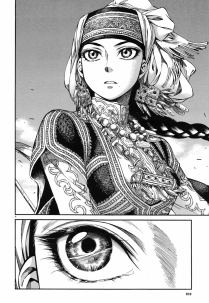 |
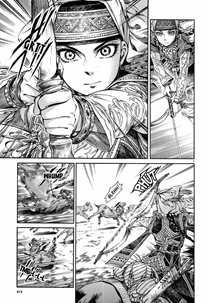 |
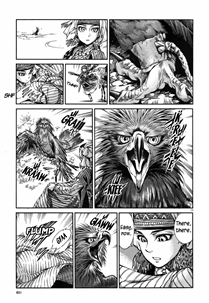 |
“The Winged Hawk”
To my way of thinking, there’s absolutely no doubt that Otoyomegatari is the most beautiful manga currently in production. In terms of art, I don’t think there’s another mangaka who can hold a candle to Mori Kaoru – from her backgrounds to her natural landscapes to living creatures, she’s without peer. Her characters are beautiful too – not just Amira, but also the others – Karluk with innocent nobility etched into his face in the manner of Chagum from Seirei no Moribito, the other children in the series (including the young brides and grooms we just left), and the craggy and weathered faces of the elders, showing every year of hard life acquiring wisdom in an unforgiving landscape.
I think with Otoyomegatari, though, Mori-sensei has achieved a beauty in her storytelling that transcends any of her earlier work. As her art is dizzyingly complex and detailed, her plotting is breathtakingly simple and direct. With this series she’s finding the innate beauty in the simple necessities of life – family, survival, food, craftsmanship, and yes, romance. The 19th-Century Caucasus setting is a perfect canvas for Mori the writer to prove she’s every bit the equal of Mori the artist.
As much as I’ve enjoyed the last several chapters, it’s with great joy that I see Otoyomegatari return to Amira and Karluk and the wonderful family that surrounds them. Theirs is a story quite unlike any other I’ve seen in manga –the chronicle of a marriage between a 20 year-old woman and a 12 year-old boy, told with limitless grace and restraint without for a moment ignoring the implicit challenges their relationship faces. This tale works, without a doubt, because the people at the heart of it are two of the best characters in recent manga. Simply put, this may be one of my favorite romances in my anime and manga history, despite thus far only showing us in the audience the occasional gentle kiss.
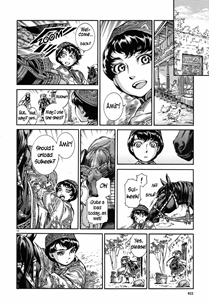 |
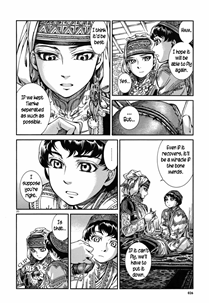 |
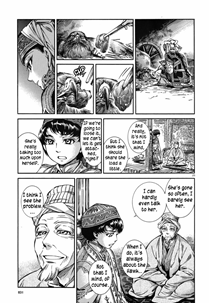 |
How then is it possible for a story to be romantic, when it’s so lacking in physicality? Well, in the first place it’s not quite so lacking as it appears at first – Amira and Karluk and quite conscious of the other (just look at the stupendous dialogue-free chapter Mori-sensei delivered a few months back). But more than that, it’s a romance of the soul. Karluk may be a child but – like Chagum – he shows us constantly that there’s more to being a man than simply physical proportions. Karluk is responsible, kind, courageous and determined to do everything within his power to be the husband he believes Amira deserves – while still depending on her indulgence as she waits for him to reach the point where he can be more than her soul-mate. Amira isn’t above a little impatience (“I wish he’d grow up just a little faster”, from the aforementioned chapter), yet she recognizes that she’s actually been very lucky in the man fate has chosen to be her husband. Amira is as capable as any man, skilled and strong and beautiful, but she accepts a kind of best friend relationship with Karluk as he learns how to be a man.
This chapter tells a rather lovely and sad tale of a wounded hawk that Amira finds on one of her hunting excursions – the jumping-off point for some of the most stunning artwork Mori has delivered in the entire series – yet I think it’s most notable for the growth it shows in Amira and Karluk’s relationship. We’ve been away from this couple for awhile but as with old friends, it’s instantly familiar watching them interact – Amira’s restless, wild spirit and Karluk’s helplessness as she soars higher and farther than he can follow just yet. We see Karluk’s frustration on display more openly than ever before, as he goes to his Grandfather for advice when he feels forgotten in Amira’s endless dedication to nursing the hawk back to health. Not only does the old man instantly boil Karluk’s problem down to its essence – “You’re jealous” – but he blurts out the truth to Amira without a moment’s hesitation.
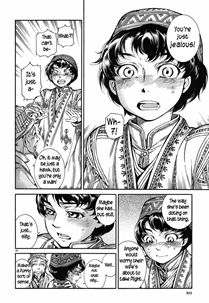 |
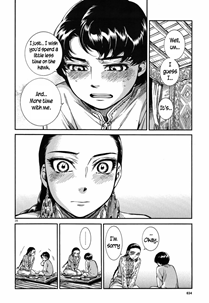 |
 |
That Amira could be completely unaware that Karluk felt this way is only a testament to how much growing up she has to do as well. The reconciliation between them is absurdly innocent and unpretentious – his hands held out to her, their nervous half-smile, a kiss – yet so emotionally pure as to be as romantic a moment as you’ll see in manga all year, most likely. Sadly, for the hawk there’s no such happy ending – its broken wing doesn’t heal well enough for it to fly. Karluk – seeking to ease Amira’s pain – suggests they keep it anyway, but she adamantly refuses. If a hawk can’t soar and hunt for itself, it isn’t really alive. Seeing the determination in her Karluk doesn’t press the issue, and again proves that you can’t judge whether someone is a man based on appearances by insisting on putting the bird down himself to spare Amira the pain of having to do so.
There are signs that the small romantic stories the series is built around might be giving way at least in part to a larger plot, as has been hinted at in Mr. Smith’s journeys. The Russians are becoming ever bolder in their incursions, and the traveler who owned the hawk arrives to share tales of banditry reigning supreme in the areas where the locals have been displaced by them. My suspicion is that these developments will be used in a similar fashion to the attempts Amira’s family made to reclaim her – to further illuminate Karluk and Amira’s relationship, and to bring them closer together. Selfishly, it’s my hope that Mori-sensei keeps her focus on those two for the most part – as charming as her side stories have been, Otoyomegatari is quite simply at its best when its two best characters are in full focus.
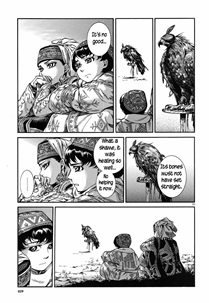 |
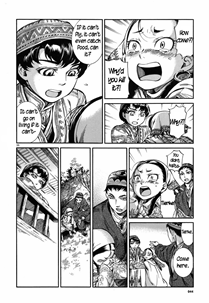 |
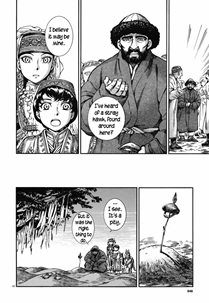 |


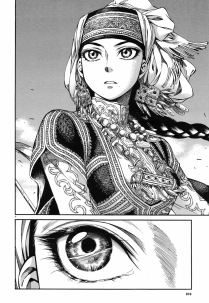


elianthos
February 6, 2013 at 10:55 amThis was a beautiful chapter – and a beautiful post -.
Karluk and Chagum are similar in some ways, aren't they? While rewatching the SnM dvds recently I was struck by that and realized that's probably one of the reasons I like both works so much.
Unlke the hawk I trust our dear Amira's wing and spirit can mend right in case someone ever tried to break and cage her her. I can't avoid thinking the parallelism here works both as a callback to her birth family ways and environment as well as possible foreshadowing.
At present though the bird's tale has managed to reaffirm how the bond between her and Karluk is growing. And it's a joy to watch.
There are a handful of other mangaka whose art and story I really admire (currently Watanabe Taeko's Kaze Hikaru, Yoshinaga Fumi's Ooku, Fuyumi Soryo's Cesare and Yukimura Makoto's Vinland Saga – the latter especially since it was moved to a seinen magazine… both art and content flourished – . And Natsuki Sumeragi's works are visually a treat with their detailed art and period piece/folk legends setting, especially her Yami Ni Sumu Kami short stories collection http://www.mangatraders.com/manga/series/4739 and her Beijing Opera volumes. Out of these I think she might be the best draftsman ) but I agree with you in the way Otoyomegatari just manages a superior balance between careful visual crafting – It's hard to draw in such painstaking detail while not cluttering the page on top of that – storytelling and the characters themselves.
I'm embarassingly fond of them. And I'm really looking forward to savour this in print. But it will take some months at least before the translations hit the shelves *sigh* (this chapter should be at the end of volume #5 I think… I hope, as vol. 4 had chapter #17 through #22 ).
raucousraven
February 7, 2013 at 1:04 amKarluk reaching out his hands to Amira, especially after that excruciating conversation, was about as brave as Amira was in extending her hand to the injured hawk. Emotional courage doesn't get underestimated in the manga, which I really appreciate, since I'm super-invested in this couple's developing relationship! Thanks for excellent coverage of this fantastic manga, Enzo. Cheers.